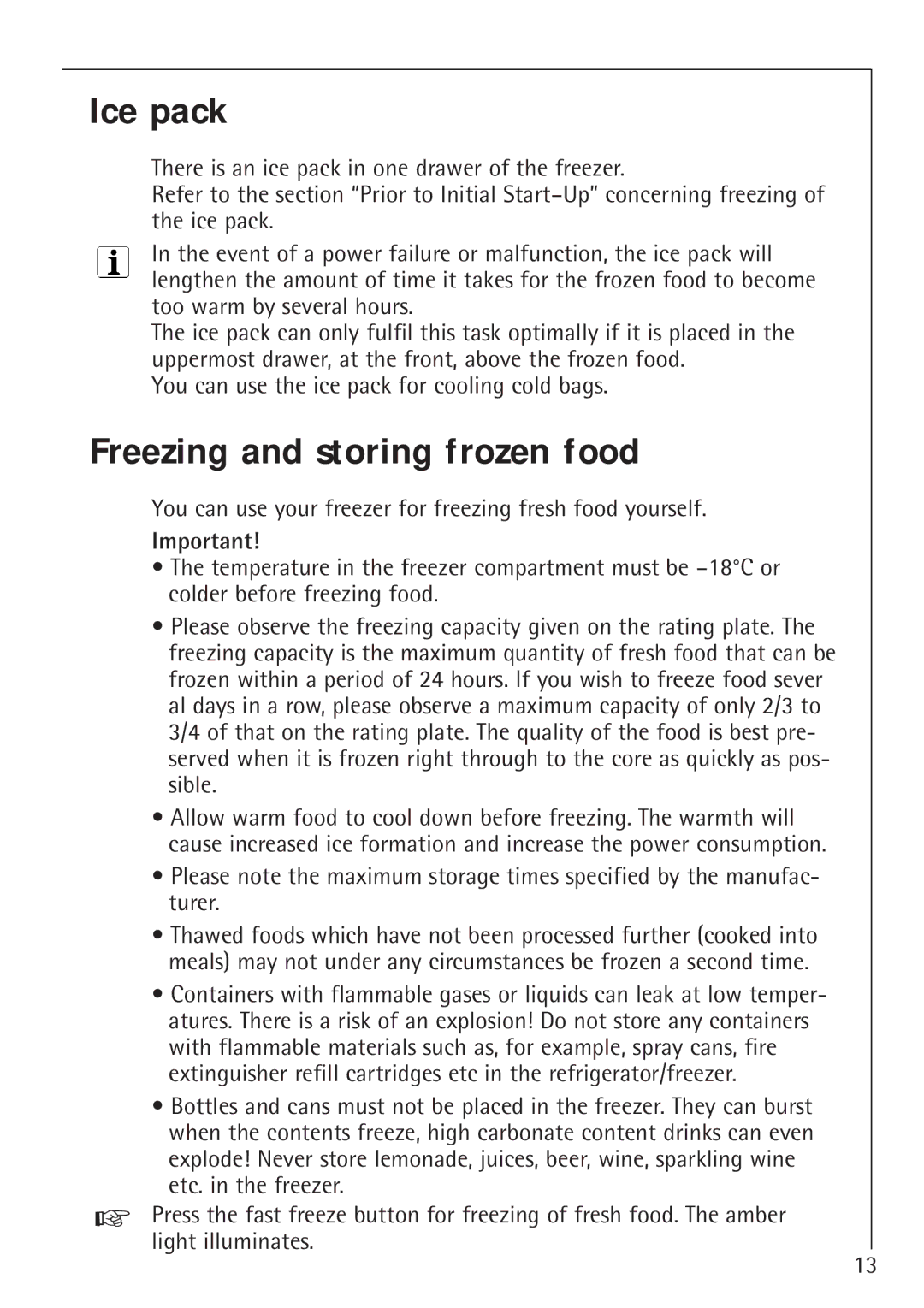1243-4 GS, 1273-4 GS specifications
The Electrolux 1273-4 GS and 1243-4 GS are two remarkable washing machines designed to enhance the laundry experience with their advanced features, innovative technologies, and user-friendly designs. Both models cater to diverse consumer needs, providing efficient and effective cleaning solutions for modern households.One of the standout features of the Electrolux 1273-4 GS is its large-capacity drum. With a generous load capacity, it allows users to wash more laundry in a single cycle, saving time and energy. The machine is equipped with a powerful motor that ensures optimal agitation for thorough cleaning, making it an excellent choice for families with heavy washing demands.
The 1243-4 GS, on the other hand, is designed with efficiency in mind. It incorporates an inverter motor that not only reduces energy consumption but also minimizes noise levels during operation. This makes it a great option for apartments and homes where quietness is a priority. Both models are rated highly for their energy efficiency, reflecting Electrolux's commitment to sustainability and environmentally friendly practices.
Another significant aspect of these machines is their array of washing programs. Users can choose from multiple settings tailored for different fabrics and soil levels. This versatility allows for careful cleaning of delicate items as well as heavy-duty loads. The smart wash technology in these models ensures that the appropriate water and energy levels are used based on the selected program and load size, further enhancing efficiency.
The Electrolux 1273-4 GS and 1243-4 GS also feature easy-to-use control interfaces, often incorporating digital displays that provide real-time information on cycle progress and remaining time. Additional features such as delay start options enable users to schedule their laundry according to their convenience.
In terms of design, the sleek and modern aesthetics of both models allow them to fit seamlessly into any laundry space. They boast durable builds, ensuring longevity and resilience against the rigors of daily use.
In summary, the Electrolux 1273-4 GS and 1243-4 GS are excellent washing machines that combine user-friendly features with advanced technologies. With their commitment to efficiency, versatility, and thoughtful design, they represent a valuable investment for anyone looking to enhance their laundry experience.

